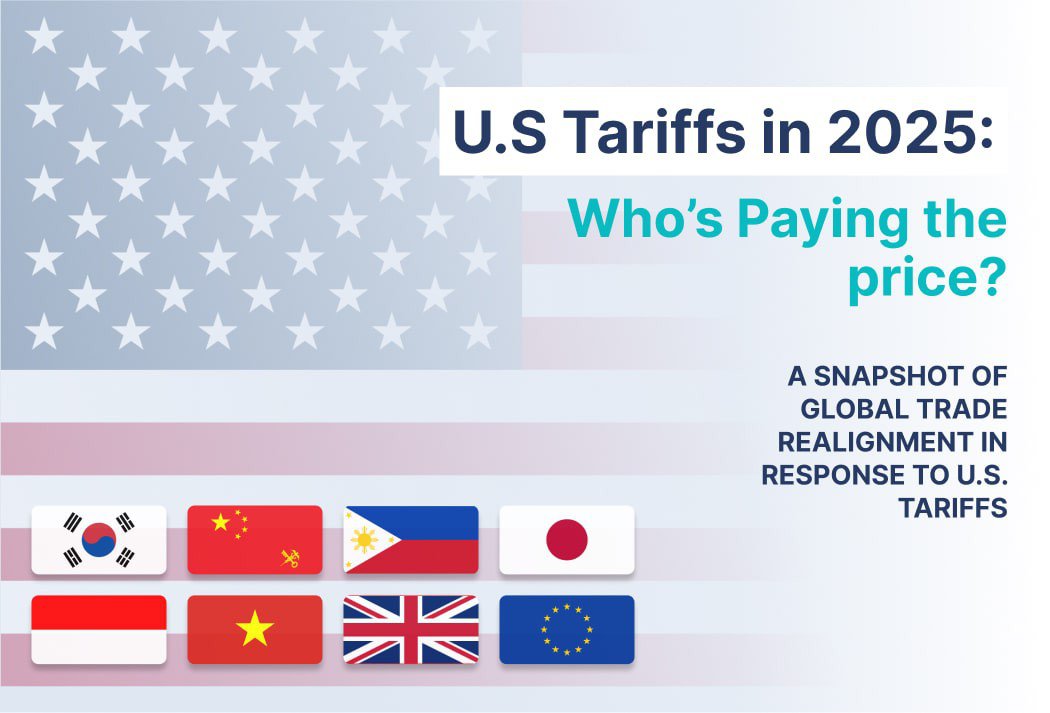
As of mid-2025, the United States' tariff policy is undergoing one of its most significant overhauls in decades. Triggered by a renewed push for economic nationalism under the Trump administration's second term, a series of sweeping tariffs have reshaped global trade dynamics. With the August 1 deadline for new tariff rates fast approaching, this article explores the latest developments, key negotiations, legal challenges, and their implications for businesses, consumers, and international partners.
Backdrop: The April 2025 Tariff Shock
The introduction of a universal 10% reciprocal tariff on most imports in early April 2025, often referred to as "Liberation Day," marked a turning point in U.S. trade policy. Enacted under the International Emergency Economic Powers Act (IEEPA), the policy quickly caused global market instability, prompting a temporary pause and negotiations with major trade partners. Although the initial shock was softened by a 90-day suspension of country-specific tariffs, tensions remain high as the suspension nears its end.
Tariff Structure and Adjustments
- Baseline Reciprocal Tariff: Initially set at 10%, the baseline is now proposed to rise to 15% or even 20% by August 1.
- Country-Specific Tariffs: Customized rates were proposed for over 20 countries. Japan, for example, recently secured a 15% rate following a bilateral trade deal, while rates for countries like the Philippines, Indonesia, and Vietnam hover around 19-20%.
- High-Tariff Categories: Select sectors like steel, aluminum, autos, and semiconductors face tariffs as high as 50% under Section 232 and Section 301 authorities.
Key Trade Deals and Negotiations
- U.S.–Japan Deal (July 2025): Marking a major breakthrough, Japan agreed to invest $550 billion in the U.S. and open its markets further in exchange for a reduced tariff rate of 15%.
- Ongoing Talks: Similar negotiations are underway with South Korea, the U.K., China, and the European Union. South Korea is notably leveraging its shipbuilding sector as a bargaining chip.
Legal Hurdles and Court Rulings
A pivotal court decision on May 28 ruled that the IEEPA-based tariffs lacked statutory authorization, placing a legal cloud over the administration's trade agenda. While tariffs under other authorities remain valid, the case is under appeal, and its outcome could redefine executive powers in trade policy.
Economic Impact on Businesses and Consumers
- Market Reaction: The initial announcement caused a sharp stock market decline. However, investor confidence rebounded following diplomatic wins like the Japan deal.
- Cost to Consumers: According to Yale’s Budget Lab, the average U.S. household is expected to incur an additional $2,700 in expenses due to higher import costs.
- Business Uncertainty: Industries like automotive and manufacturing face billions in projected losses, with General Motors alone forecasting a $5 billion impact in 2025
Revenue and Economic Indicators
Despite the controversy, the U.S. Treasury reports a record tariff revenue of $200 billion for FY2025, with projections topping $300 billion. Wage growth and domestic capital investments are also showing upward trends, according to administration sources.
Outlook and Strategic Implications
As the August 1 deadline approaches, the administration’s strategy is entering a crucial phase. Whether through negotiated reductions or full enforcement of 15–50% tariffs, the direction of U.S. trade policy will profoundly impact global commerce. Businesses must prepare for multiple scenarios while staying informed about evolving bilateral agreements and legal rulings.
Conclusion
The 2025 U.S. tariff landscape is a complex and rapidly evolving arena. While proponents tout its potential to boost domestic industries and revenues, critics highlight the risk of inflation, global retaliation, and legal overreach. For stakeholders across the supply chain, vigilance, agility, and proactive planning are now more essential than ever.





 Get instant quote
and compare offers in real time
Get instant quote
and compare offers in real time